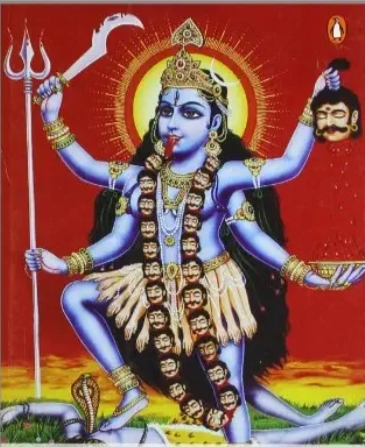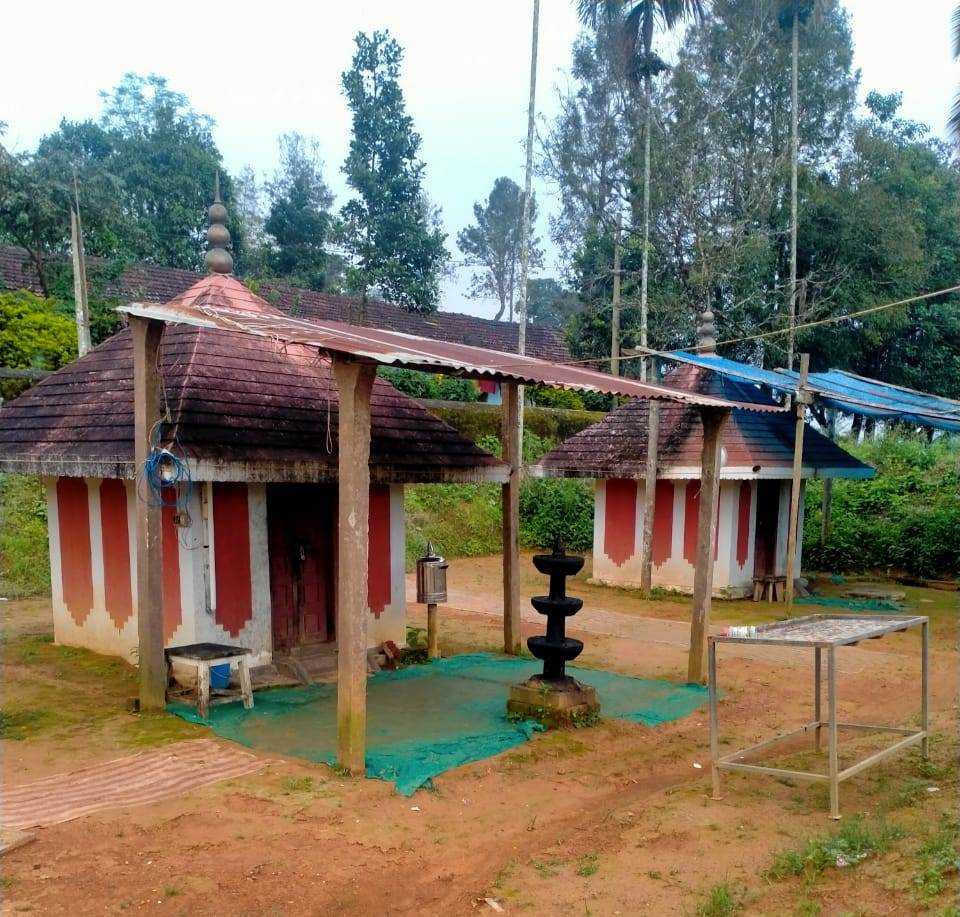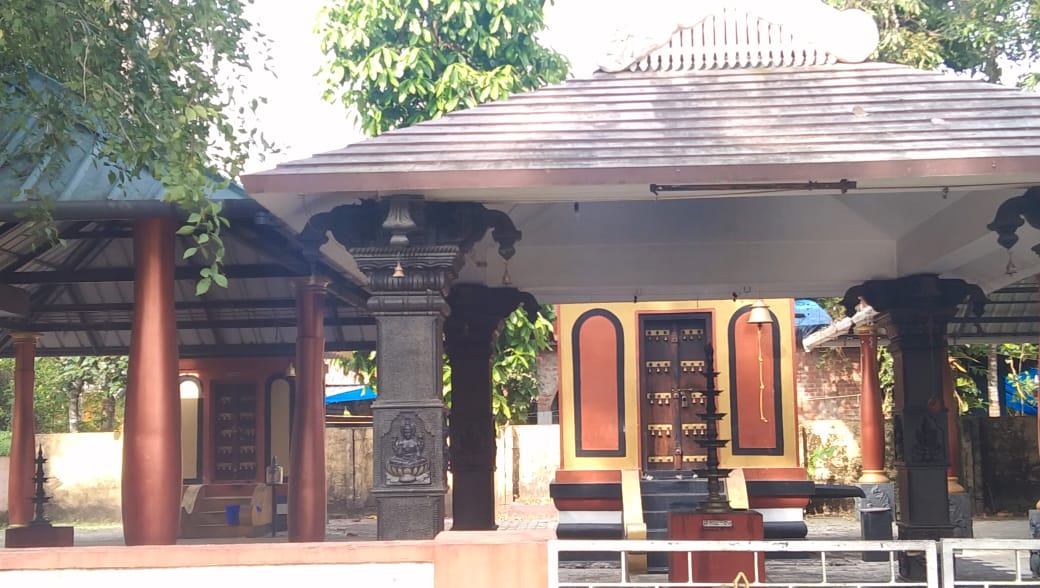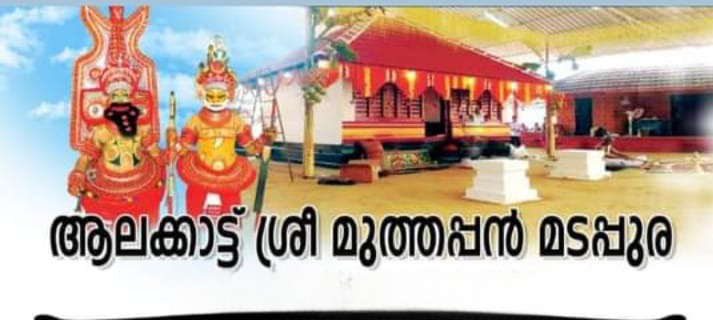Tulja Bhavani Temple (Marathi: श्री क्षेत्र तुळजा भवानी देवस्थान) is a Hindu temple dedicated to the goddess Bhavani. It is located in Tuljapur in Osmanabad district of Maharashtra, India, and is considered one of the 51 Shakti Pithas. It is situated 45 km from Solapur. The temple was built in 12th century CE by Maratha Mahamandaleshwara Māradadeva Kadamb.[1] The management and priestly rights of the temple are held by the Kadamb Bhope clan, the descendants of Māradadeva. Goddess Tulja Bhavani is known by names Tulaja, Turaja, Tvarita, Ambā and Jagadambā in different regions. Tulja Bhavani is a form of Durga who is worshiped in Maharashtra, and also by people of Telangana, Northern Karnataka and Nepal. Bhavani translates to "giver of life", meaning the power of nature or the source of creative energy. She is considered to be a mother who provides to her devotees and also plays the role of dispensing justice by killing Asuras.
Chhatrapati Shivaji Maharaj the founder of the Maratha kingdom, always visited this temple to seek blessings. The legend has to its credit to say that the Goddess gave him a sword called ‘Bhavani kadga’' by using which Chhatrapati Shivaji Maharaj was successful in his expeditions. The history of the temple dates back to the days of ' Skanda Purana ' as it finds a mention in that holy script. According to the epic story, there was a sage "Kardam" and his consort "Anubhuthi’ with an infant, in this area. After his death his wife "Anubhuthi" performed a penance for goddess in the name of Bhavani on the banks of river "Mandakini" to look after her child. There was a demon (Rakshasa) by name “Kukur" who tortured her. Then Goddess Bhavani rescued Anubhuthi and killed the demon. The goddess on the prayer of her pet devotee settled on the hill of "Bala ghat". Since then the Mother Goddess came to be called as Bhavani of Tuljapur or Tulja Bhavani.
Mother Goddess Bhavani temple is the place where Chhatrapati Shivaji Maharaj graced was blessed by Matha Bhavani. It is situated at Tuljapur as such it is popularly known as Tulja Bhavani Temple in district of Maharashtra. It is one of the 51 Shakti Peetas attributed to Goddess. The second among the 'Shaktipeetas' is Goddess Bhavani at Tuljapur. Bhavani is one who gives life and source of original power. Tuljapur is at 45 km from Solapur. Historically this temple was built in 12th century. There is yet another Tulja Bhavani temple built in 1537-1540 in Chittorgarh. There is a third temple of Tulja Bhavani in the village of Patnakuva Gandhinagar in Gujarat. According to the priest, this Goddess came here from Tuljapur during 14th century. The Goddess is said to be swayambhu (self emanated). It is true that God or Goddess is always referred as ‘swayambhu’ in Vedas, Puranas and many legends. But it does not refer to the stone idol installed in a temple. What is attributed is to the invisible Supreme power.
The second among the 'Shaktipeeths' is Tulja Bhavani of Tuljapur. It is the family deity of the Bhosale Royal family, the Yadavs and of countless numbers of families belonging to different castes. The great ruler & founder of the Maratha kingdom, Chatrapati Shivaji Maharaj visited the temple as he was a prominent devotee of her, people believe that the Goddess gifted him a sword - 'The Bhawani Talwar' - to succeed in his expeditions. Tulaja word indicates to an old Hindu monastery at Tolaja village in the present Rawalpindi division of Pakistan.
Along with temples of Renuka at Mahur, Mahalaxmi at Kolhapur, and Saptashringi at Vani, the temple of Bhavani at Tuljapur forms the four great Shaktipitha in Maharashtra.[3] Many legends are associated with the temple. One legend involves a demon, Madhu-Kaitabh who was wreaking havoc upon the gods and humans. Unable to find any solution, they turned to Lord Brahma for help, and upon his advice turned to Goddess Shakti, who took up the form of a destroyer and powered by the other (Sapta) Mata Varaahi, Brahmi, Vaishnavi, Kaumaari Indraani and Saambhavi, vanquished the demon and restored peace. Legend also states that Bhavani finished another demon that had taken up the disguise of a buffalo (Mahisha), and took shelter on the Yamunachala Hill which is part of Balaghat mountain range.[4] The Tuljabhawani temple is located on this hill. Another legend mentions the story of a sage known as "Kardam" After his death his wife "Anubuti" had performed a penance at the banks of river "mandakini " for Bhavani mata to look after her infant child. While performing the penance the demon known "Kukur" tried to disturb her penance during which the Goddess came to the aid of "Anubuti" and killed the demon "Kukur". From that day onwards the Goddess Bhavani came to be known as Tulja Bhavani.
The main entrance of the temple bears the name of Sardar Nimbalkar. The other two entrances are named after the parents of Chatrapati Shivaji Maharaj , that is Raja Shahaji Maharaj, and Rajmata Jijau. As one enters the Sardar Nimbalkar entrance, there is a temple dedicated to Markandeya Rishi on the right. After descending the stairs, one sees the main Tulja Temple. There is yagna kund (Holy Fire pit) in front of this temple. On the floor near two main gates (Raja Shahaji Mahadwar and Rajmata Jijau main gate), there are two libraries named, Shree Santh Dnyaneshwar Dharmik Library and Shree Tukaram Dharmik Library. After alighting from the stairs, there is `Gomukh Theerth` on the right side and `Kalakh`, also known as `Kallol Theerth` on the left side. Before entering the Sanctum sanctorum of the Goddess, devotees take a dip here in these theerths (Shallow tanks of "holy" water). There are also Amruth Kund and a Datta temple on the premises. A Siddhi Vinayak temple is situated on the left side of the main gate whilst on the right, there is a temple of Aadishakti, Aadimata Matangadevi. A temple of goddess Annapurna is also present in the main complex.
The idol of Goddess Tulja Bhawani is believed by her devotees to be `swayambhu` ("self-manifested" or "that which is created by its own accord"). The high granite idol is three-foot tall, with eight arms holding weapons, and bearing the head of the slain demon Mahishasura. The Goddess is also known as Tulaja, Turaja, Tvarita and Amba.
The Goddess is kuldevi (clan goddess) for Maratha clans of Maharashtra.[5] The Goddess is either revered by or is the Family Deity for many castes including Dhangar,Mali, Deshastha Brahmin, Bharbhunja, Burud, Kolhati, Gavli, Jogi, Johar, San Teli, Gavandi, Pangul, Sonar, Lonari, Kasar, Bhute, Kalar and Koli.
Adi maya Adi shakti temple is the temple north to the Tuljabhavani temple. First pooja of this starts, and then followed by pooja of Tuljabhavani takes place.
At 5 a.m. before the puja starts, large drums in the drum house (Nagarkhana) of the temple are played loudly. The drums is a call to prayers (puja) for the devotees. The drums are played (Chaughada) three times during the day
The puja performed is at 5:30 a.m. This puja is performed by the hands of the Mahant (chief priest). At the time of Charantirtha puja, the representative of Kolhapur princely state is present. Devotees sing the Arti (holy songs). After this naivedya (holy meal) of Bhaji-Bhakri is offered to the goddess. A descendant representative of the devotee, Uparkar offers this naivedya. Later the naivedya of Kheer by the representative of the former princely state of Kolhapur is offered.
At 9 a.m in the morning the goddess abhishekam is done by Panchamrut and curd. The Gomukh (holy pond of the goddess) water is used for the goddess' abhishekam. During this puja people also abhishek the holy throne of goddess by curd, mango juice, and shreekhand. After the abhishek, Maha naivedya (big holy meal) by the Karvir (Kolhapur) princely state is offered to the goddess
At noon, the clergy and devotees praise the goddess by singing holy songs and lighting Incense (dhup) and karpur (camphor).
At 6:00 p.m., the goddess abhishekam is done by Panchamruta and water from Gomukha and puja is performed. The arrangement of these materials is done by the Karvir (Kolhapur) princely state.
At night the Prakkshal ritual is performed using the holy water from the Gomukha and the Naivedya of Tup (Ghee) and cooked Rice (Bhat) is offered.
During every Aarti, ritual musical instruments such as tal, dimdi and zanj are played. Gondhali play the Sambal instrument as Chaughada are played.
Ajabali
On Khandenavami and Dussera festival, animals are sacrificed in the honour of the goddess.




No Events for next 2 days